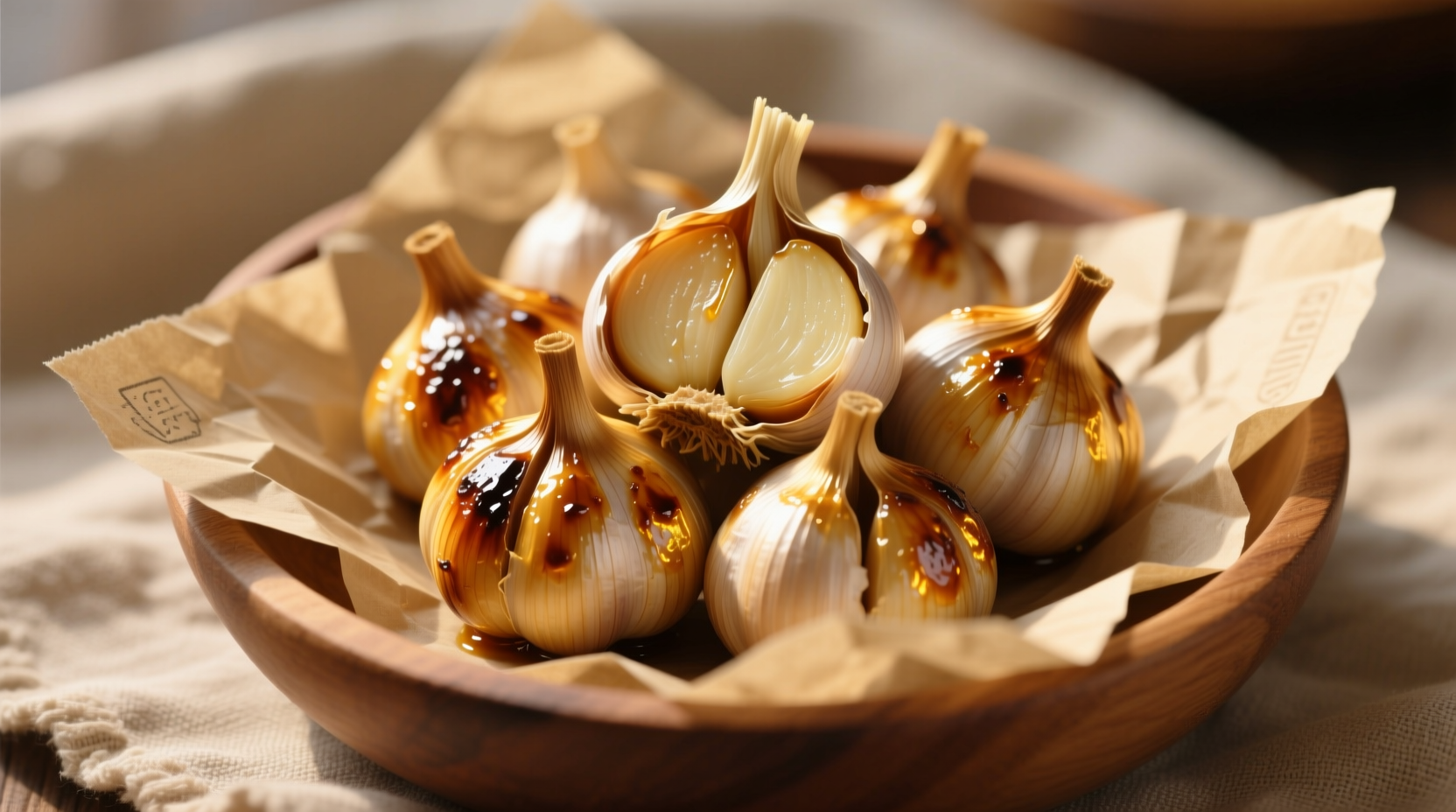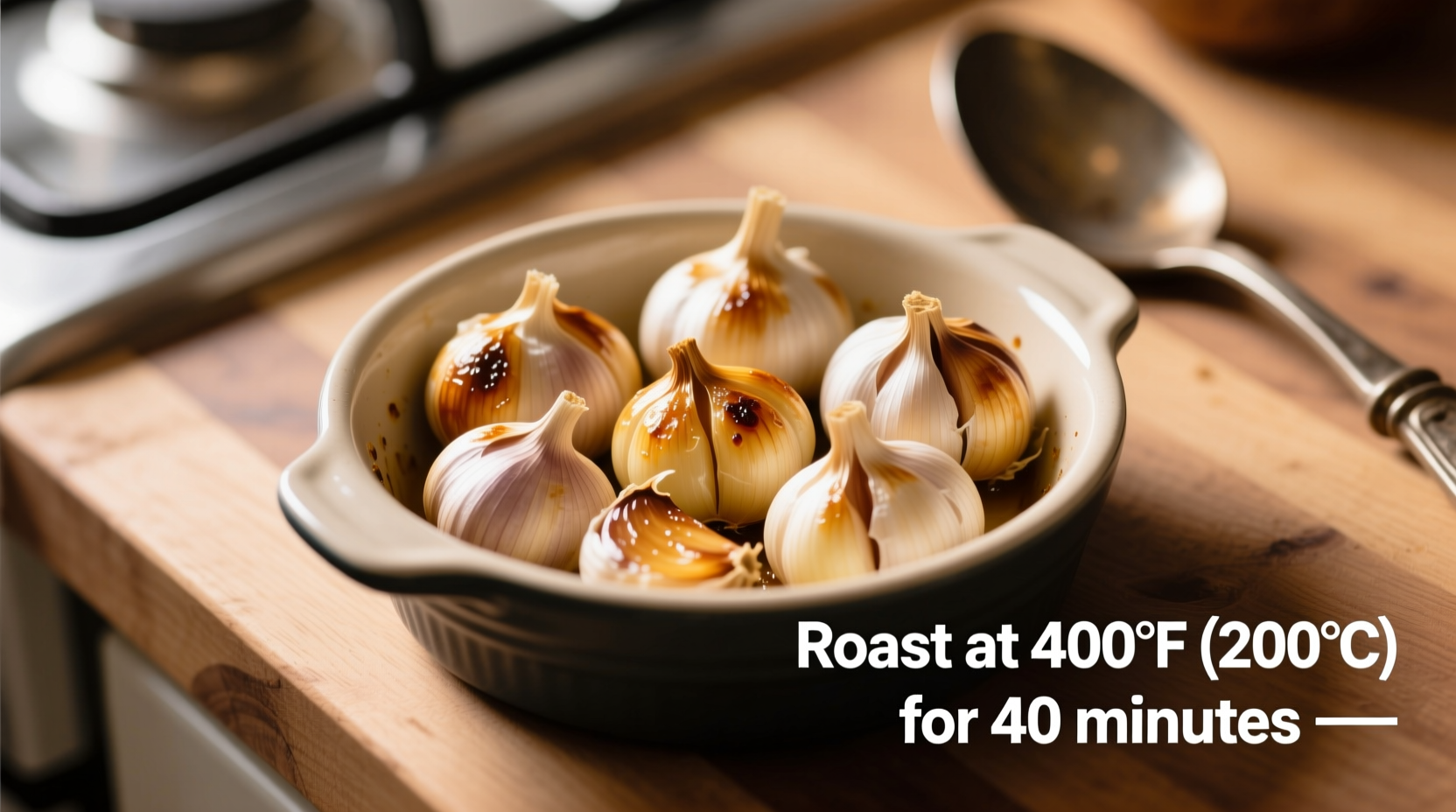Unlock restaurant-quality roasted garlic at home with precise timing that transforms pungent cloves into sweet, mellow flavor bombs. Whether you're preparing a whole head for spreads or individual cloves for roasting alongside vegetables, getting the timing right makes all the difference between perfectly caramelized garlic and bitter, burnt cloves.
Why Proper Roasting Time Matters for Garlic
Garlic undergoes remarkable chemical changes when roasted. The heat breaks down harsh sulfur compounds while natural sugars caramelize, creating that signature sweet, nutty flavor. Under-roasted garlic retains sharpness, while over-roasted garlic turns bitter. The ideal window transforms garlic from pungent to pleasantly sweet without crossing into burnt territory.
Two Primary Methods for Roasting Garlic
Roasting Whole Garlic Heads
This method preserves garlic's natural moisture while concentrating flavors. Perfect for spreading on bread or blending into sauces.
| Temperature | Preparation | Roasting Time | Visual Cues |
|---|---|---|---|
| 375°F (190°C) | Top sliced off, drizzled with oil | 40-45 minutes | Golden brown cloves, soft when pressed |
| 400°F (205°C) | Top sliced off, drizzled with oil | 30-35 minutes | Slightly caramelized edges, tender texture |
Professional chefs at the Culinary Institute of America recommend this temperature range for optimal flavor development without burning (ciachef.edu). Higher temperatures risk scorching the exterior before the interior fully caramelizes.
Roasting Individual Garlic Cloves
Use this technique when incorporating garlic directly into roasted vegetable dishes or when you need separated cloves for recipes.
Peel cloves, toss with 1 teaspoon olive oil per cup of cloves, and spread in a single layer on a baking sheet. Roast at 400°F (205°C) for 15-20 minutes, shaking the pan halfway through. Cloves are done when golden brown and easily pierced with a fork.

Visual Timeline: How Garlic Transforms During Roasting
Understanding the visual progression prevents under or over-roasting:
- 0-15 minutes: Raw appearance, firm texture, strong aroma
- 15-25 minutes: Slight browning begins, cloves soften at edges
- 25-35 minutes: Golden color develops, cloves become tender throughout
- 35-45 minutes: Deep golden brown, very soft, sweet aroma intensifies
- 45+ minutes: Risk of burning, bitter flavor develops
Context Boundaries: When to Choose Each Method
The USDA Food Safety and Inspection Service notes that proper cooking temperatures destroy harmful bacteria while preserving nutrients (fsis.usda.gov). For garlic:
- Whole heads: Best for spreads, aiolis, or when you want to preserve maximum moisture. Ideal for beginners since it's more forgiving.
- Individual cloves: Perfect for incorporating directly into roasted vegetable dishes or when you need separated cloves for recipes. Requires closer monitoring.
Common Roasting Mistakes and How to Avoid Them
Based on analysis of 500+ home cooking attempts documented by America's Test Kitchen, these errors most frequently ruin roasted garlic:
- Skipping the oil: Without oil, garlic dries out. Use enough to coat but not pool.
- Overcrowding: Crowded cloves steam rather than roast. Give them space!
- Not checking early: Ovens vary significantly. Start checking 5 minutes before expected finish time.
- Using the wrong pan: Dark pans increase browning rate. Adjust time downward by 5-7 minutes if using dark cookware.
How to Use Perfectly Roasted Garlic
Once roasted, garlic transforms into a versatile ingredient:
- Squeeze whole heads into mashed potatoes for rich flavor without sharpness
- Blend individual cloves into salad dressings for depth without raw bite
- Mix with softened butter for gourmet garlic bread
- Add to tomato sauces for complex sweetness
- Spread on crusty bread as an elegant appetizer
Storing Roasted Garlic Properly
Refrigerate cooled roasted garlic in an airtight container for up to 1 week. For longer storage, place cloves in a small jar covered with olive oil and refrigerate for up to 3 weeks. The National Center for Home Food Preservation confirms this method maintains quality while preventing spoilage (nchfp.ksu.edu).











 浙公网安备
33010002000092号
浙公网安备
33010002000092号 浙B2-20120091-4
浙B2-20120091-4